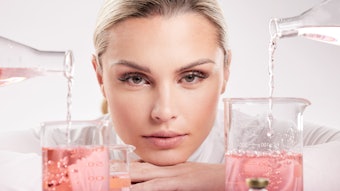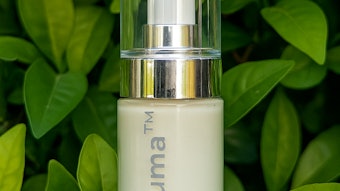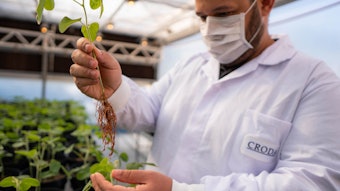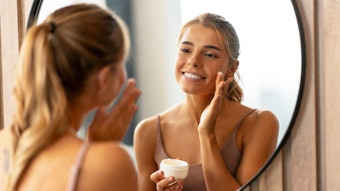Editor’s note: This article is from a two-partseries that originally ran in the February 2013 issue of Cosmetics & Toiletries magazine. All rights reserved.
The following dialogue is based on a presentation given by Katerina Steventon, PhD, (KS) at the Anti-Ageing Skin Care Conference on June 12, 2012, in London. It establishes a conversation with Steve Barton (SB), a skin biologist with Skin Thinking Ltd., to discuss concerns and perceptions of British consumers related to skin care. Barton has extensive experience working with marketing teams to improve communication of skin care benefits to consumers by initiating communication between the consumer and the product developer.
KS: As a skin care consultant promoting skin health, my credibility stems from achieving results and alleviating skin concerns. The challenge is to find products that truly deliver visible benefits; there is not a single brand on the market that can address all skin types.
SB: You make two good points. I agree that credibility and satisfying (all) consumer needs are vital for sustainable success in cosmetic development; credibility with dermatological professionals and regulators is also present. However, I do believe visible benefits are being delivered to our consumers, and your struggle to find products that “truly deliver visible benefits” may be reflection of a “clinician’s” view. This has encouraged “clinical testing” on cosmetics, which, by definition, target (overall) appearance with no requirement for clinical change. This is further complicated since consumer self-assessment includes both emotional and rational judgments; some degree of “placebo effect” is evident for cosmetics. On the second point, the consumer’s needs comprise diverse characteristics under the skin aging umbrella. Developers work hard to understand the consumer’s needs, but satisfying all these needs, even within one range, may be an unreasonable expectation. While this is difficult, companies now advertise products tested on a range of ethnicities.
Facial Skin Care
KS: The British facial skin care market has a value of approximately £1 billion (£0.88 billion in 2010), and is still growing despite the recession. Consumers pay attention to aging concerns in uncertain economic times, and the anti-aging category is strong. Launches with anti-aging claims, as defined by Mintel, are rising in the U.K., but usage of anti-aging skin care is lower in the U.K. than in the rest of Western Europe. The target group of consumers for anti-aging skin care is age 35+, specifically 45–65. Consumers are looking for these essential claims: moisturization (90%), anti-aging (32%) and radiance (6%). Desirable claims include “green, ethical, sustainable and botanical” with certification.
SB: Another challenge for a [product developer] is the definition of anti-aging skin care. Are all anti-aging claims the same? By analogy, hair conditioning was only credible as something separate to shampooing 30 year ago, but conditioning shampoos are common in today’s market. Consumer experience has made this credible, but conditioners offer consumers more intensive sensory and objectively measured results. All facial moisturizers could be defined as anti-aging, as the majority will improve skin hydration and condition—key components of improving the signs of skin aging.
Like hair conditioners, there are high performance skin products that are desired by many consumers. The [product developer] must determine what type of anti-aging the consumer expects, be it protection, maintenance, improvement, dullness, wrinkles or uneven pigmentation.
The summary of the “essential claims” demonstrates the diversity of cosmetic end-points, and consumers will define these differently. These are rarely mutually exclusive or independent end-points, so “targeting” this with technology is rarely precise. Likewise, the techniques chosen to assess aged skin are rarely direct measures of one characteristic. [Product developers] have to decide which aspects to test and communicate to their consumers—simplifying the message and fulfilling expectation is a skill.
The “desirable” claims highlighted, again, have a strong emotional connection. The [product developer] often struggles to fulfill these needs without compromising on sensorial and performance criteria.
Aging Demographics and Society
KS: Skin is a visible organ of emotional expression and social communication. Skin condition impacts the perception of others and an individual’s self-esteem. Aging baby boomers have grown old in a society fascinated with youth, beauty and celebrity. Dissatisfaction with facial appearance can cause distress, low self-esteem and compromised relationships. Our society views visible aging differently from internal diseases. Aging women, in particular are paid less attention and visual contact, making them feel invisible. They perceive greater pressure to look youthful at work, despite age discrimination legislation. Exposure to the ideal images in the media is detrimental at times to greater self-monitoring such as during menopause.
SB: This issue has received a lot of attention lately. We should continue to explore changing consumer needs and attitudes to skin aging, appearance and health since the emotional component of anti-aging is as important as the technological. It is also clear that within these issues there is a broad range of responses in consumers, as some strive for perfection (whether idealized in their own minds, society or advertising) while others will accept the inevitability of skin aging. The challenge for the [product developer] is how to fulfill these needs, demonstrate success and communicate this by connecting to the consumer’s emotional needs.
Skin Types and Concerns
KS: There is little consensus on skin type definitions in the scientific community. British women are least likely to report dry skin compared to other European women. While 16% say they have dry skin, 38% report they have normal skin (50% > 65+) and 28% report combination skin. However, many women incorrectly diagnose their skin type. Women with oily skin (6%), prone to negative perception in the society, demonstrate better judgment in assessing their skin type. Up to 40% of the adult population suffers from low level acne. Cultural differences play a role in skin type assessment; however, other influencing factors include seasons, smoking, stress, nutrition, medication, hormonal changes and inadequate skin care routines.
SB: Without clear definitions of skin types, this should not be surprising. From a technical standpoint, dry/oily/combination/normal give only directional guidance to potential solutions. There have been some attempts to improve on this. As the industry learns more about changes in skin condition with time, geography and ethnicity, brain-skin interaction and the genetic component of skin aging, the industry’s knowledge of consumer expectations and the ability of a product to fulfill consumer needs lags behind our knowledge of the potential routes to changing their skin. There is a need to simplify processes of skin aging to improve expectations for better defined consumer subgroups.
The British Skin Care Consumer
KS: The characteristics of the U.K. skin care market are pragmatism, comfort and convenience. The British skin care culture is low key and convenience driven. Time constraints dominate, making cleansing wipes and all-in-one products popular. However, there is a high penetration of moisturizers in the U.K. market with 86% of consumers using a face cream and 48% using an anti-aging cream. As British women do not understand the importance of a night cream, only 34% use it. People ask for no-hype claims and informed choice, as they want to make an independent decision. Cognitively, they consider the data on efficacy important but skin care choice is an emotional decision. Relaxed, comfortable and convenient product concepts are successful. Also, slow-paced Internet retail experience and personalized advice are valued.
SB: So we agree that the balance between communicating on both emotional and rational bases is important for [product developers] and marketers who want to fulfill consumer needs and increase their market share.
KS: It is important for the skin care industry to encourage consumers to consider themselves worth cosmetic expenditure. Skin care should be seen as a healthy activity rather than a frivolous vanity, and the industry has to avoid offering consumers the deception that aging can be stopped when it can just be experienced differently. The preventive role of skin care and good habits are difficult to enforce, and it is important to start teaching children early.
Performance Benchmarks
KS: British consumers want to resolve all concerns, often without understanding the cost and risk involved. Cosmetic procedures, including surgery and injectables are a fast growing business, with £1.3 million procedures bringing in £2.3 billion in the U.K. in 2010. However, the recent implant crisis shows that the risks have been downgraded and there are issues with realistic consumer expectations. Skin care can never be as effective as radical surgery. Airbrushing and enhanced images that mimic the effect of surgery are false promises and are damaging to the skin care industry. The realistic targets include matching the efficacy of retinoic acid, the benchmark prescription therapy for fine wrinkles, and endorsement of skin care routines that deliver noticeable, small differences in reducing skin concerns.
SB: Recent agreements between Cosmetic, Toiletry & Perfumery Association (CTPA) and the Advertising Standards Authority (ASA) in the U.K. have clarified the use of pre- and post-production changes in advertising images. While consumers may compare their skin care to surgery, a review of consumer expectations of “surgical” procedures suggested that people prefer subtle alteration. This may be supported by L’Oréal’s Laser Renew, a product presumably trialed versus laser resurfacing, a less invasive form of “surgical” intervention.
KS: The U.K. consumer responds to media coverage of new launches. A good example is the third party endorsement of Boots Protect & Perfect Serum on the BBC’s Horizon in March 2007. The trial has been critiqued by the scientific community; however, the consumer demand brought Boots significant commercial success at the time. Two papers published since the TV program show a significant increase in fibrillin-1 deposition in six months and clinical improvement in facial wrinkles after 12 months (6 month, double-blind, randomized, controlled trial with a further 6 month open phase) compared to the vehicle and vehicle projection, respectively. This was the first clinically proven product that brought a step change in consumers’ expectations.
SB: Cosmetic [product developers] have a long history of utilizing dermatologist’s view of the processes in skin and its changes with age; however, the prevailing view of dermatologists is that cosmetics only providing temporary improvement in skin dryness or protect from UV damage using high SPF products. Accepting this dialogue requires agreement on standards of proof and scientific methodology, focusing on clinical outcome. Can cosmetic performance be tested in a clinical trial? The choice of placebo for placebo-controlled studies is also a challenge, with no real definition of a cosmetic placebo.
Boots was confident that the Protect & Perfect product could influence some skin aging factors from in vitro studies. This hypothesis was tested in a biopsy study investigating fibrillin expression with positive results that were eventually shown on the BBC program. The goal of this study was not provide clinical proof; the consumer (and press) made this extrapolation. Rather, the biopsy study provided the confidence to go into this clinical trial.
[Product developers] often find themselves in this position with new ingredients from suppliers that are formulated in bland bases. Amidst the surge in use of the Protect & Perfect product, there was some negative reaction. Interestingly, some [conusmers] who had changed from their usual routine to the serum, or started using the serum alone, found that it was not as good as their usual moisturizer. This was not surprising to [product developers] since it had not been formulated as a moisturizer. The serum was intended to deliver a more intense benefit and serve as an adjunct to a moisturizer.
It was clear that the message consumers heard was “the first ‘clinically proven moisturizer’ rather than the first product to have been tested in this manner. The overall lesson here is the need to ensure that simplifying the communication does not leave some important consumer needs unfulfilled. Education and clear advice at point of sale help this process, which is difficult when a product is selling at a rate of one every 10 seconds.
KS: Other long-term efficacy studies such as a double-blind, randomized, controlled, split face study, a comparison of a skin care product and a prescription treatment and a double-blind, vehicle-controlled trial followed the Boots trial. Some consumers ask for claims substantiated by an independent, blinded, long-term clinical trial with subjective views of the participants and clinical expert grading and objective scientific data obtained by non-invasive measurement. Initially expensive, this strategy drives commercial success. It differentiates between products with similar benefits, which is important in a purchasing environment without a dedicated sales consultant.
SB: I am interested in your statement that some consumers ask for claims substantiated in complex ways. I would suggest that they are looking for increased confidence, and cosmetic products offer the range of “confidence surrogates” that you describe.
This leaves the product developer with the challenge of identifying novel ways of saying the same thing—this product will help improve the signs of aging in your skin. [Product developers] are driven to use complex skin assessment methods that rarely measure the identified cosmetic characteristic directly. In panels, volunteers are often selected by age group even though the particular signs of aging are more relevant. The data is then analyzed with a view to arriving at a population mean effect, when it is known that sub-groups and responses will differ. Using these methods and relating the measure to the cosmetic end-point therefore requires a skill in communication to the consumer. The industry is driven in this direction in part as a response to regulatory controls, where a single model (often a clinical trial) is the most trusted model. [Product developers] need to engage more with the regulators and their advisors to better understand the burden of proof.
KS: The level of evidence required depends on the target consumer group. Sometimes a good case study relates to the consumer better than a clinical trial. Visual clues to “see how a product works” are always important. Irrespective of data, consumers want to test the products for themselves. As demonstrated with the Boots example, a third party endorsement by skin care experts, dermatologists and celebrities (to a lesser degree) is successful. The online community with independent reviews and blogs is also powerful and increasing in popularity.
SB: In the U.K., the CTPA/ASA guidelines are good first reference to understand the differences in required level of evidence. The cosmetics industry is self-regulated, so it must go to some lengths to support claims. The same cannot be said for advice sources on cosmetic products. I cannot be the only developer who has carried out intensive studies on statistically valid numbers of subjects and obtained statistically valid results only to hear that a self-appointed expert on cosmetics has tested the product on 10 people and found it lacking. Underlying such opinion, there may be some useful insights. [Product developers] should know their consumers’ needs and engage with “independent” reviewers and consumer advocates to find out more.
Scientific Communication and Training
KS: My recommendation to the skin care industry is to communicate differently with the consumers. Communication of complex scientific issues in the media in a short space of time is difficult, but it is important to focus on claims related to well-being and self-esteem promoting skin health. Educating journalists to write competent, scientifically correct, independent articles is key. Peer group driven advertising and awareness of celebrity overuse means encouraging real personalities to share their experiences in social media. Training staff to increase their expertise and revisiting skin analysis with charts, handheld devices or imaging booths leads to higher compliance, customer loyalty and repeat purchase. This will require consolidation of instrumental methods and devices to compare results easily, for the consumers not to get discouraged by the overall complexity.
SB: Having been involved in such initiatives over the last 10+ years, I can only agree. My experience is that there need to be clear objectives and identification of the target customers and their needs. The major challenge is to create realistic expectations arising from such initiatives. This is particularly important in the context of the devices employed. Some do not directly measure cosmetic concerns. In the past, devices have done little more than provide the store advisor with more credibility, and the time spent using them is rarely rewarded financially. Those adopting such methods need to have clear expectations of the business benefits.
The Life-long Process of Skin Care
KS: I also recommend promoting skin care as a life-long process. Skin care delivers benefits if viewed as an enjoyable journey to youthful appearance and skin health. It is important to focus on the quality of the experience, not the age-defying end results. Anti-aging skin care should address the onset of specific concerns in the consumer’s 40s or earlier. Improving consumer compliance can be achieved with attention to sensory benefits as well as packaging, formulation, texture and fragrance. Seeing ourselves look better helps us to feel better. Skin care has a role in building self-respect, self-esteem and personal stability.
SB: This idea supports my earlier comment that treating all anti-aging products as a single entity does not help the industry or the consumer. Most [product developers] have a clear view of the complexities of addressing skin through the ages, as well as the different ethnic, genetic and societal factors that influence attitudes of consumers to how they see their skin. What the cosmetic industry knows about aging skin and how to use this knowledge for today’s consumers may be different for future generations. The debate we’ve had here will continue.
Katerina Steventon, PhD, of FaceWorkshops, is an independent consultant to the skin care industry and the general public. She holds a doctorate in transdermal absorption and has more than 20 years of experience in skin research at companies, including Shiseido, Juvena/LaPrairie, and Smith and Nephew Wound Management. Her consultancy provides objective recommendations to consumers on personalized skin care routines and facial treatments, and her column, “Consumer Perspective,” will provide readers with unique insight on this commercial/scientific interface. [email protected].










